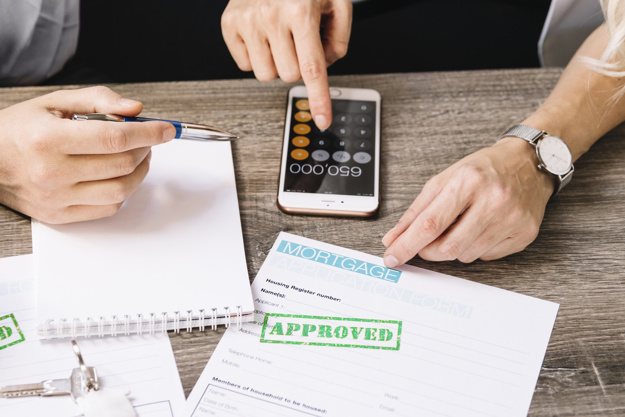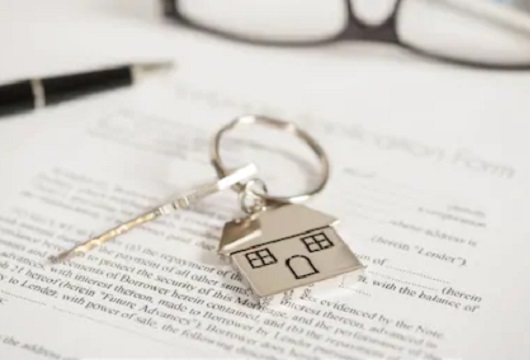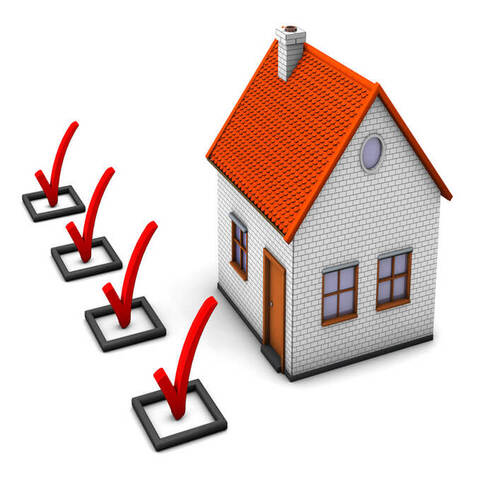There aren’t many milestones more fulfilling than buying your first house. It takes years to plan and prepare, during which time you develop your ideas of a dream home.
But there are a few things to educate yourself about that can ease the home-buying process and allow you to enjoy the experience fully.
Here are the six steps to buying your first home.
Step One: The Money You’ll Need to Buy a House
Even though you’ll likely be applying for a home mortgage loan, there are several expenses you’ll have to pay out-of-pocket along the way. It’s important to be prepared with cash on hand.
Your first expenditure is your down payment. When you apply for financing on your house, the lender usually pays 80 percent of the home’s value while the buyer pays the other 20 percent. If your dream home costs $400,000, your down payment will be around $80,000.
There are some financial institutions that may allow you to roll your closing costs into your loan, so it’s important to shop lenders when you’re ready. There are also some programs available, local and federal, that could ease the burden of your down payment.
Your next payment will be an earnest money deposit that you submit with your offer on the house. The seller does not receive that deposit. Rather, it is held in an escrow account and applied to the sale at closing.

However, it does let the seller know that you’re purposeful about your purchase. The earnest money deposit is typically one percent of the amount of your loan, so you can anticipate an additional $4,000 on a $400,000 purchase.
Next, you’ll pay what’s known as closing costs. The term “closing costs” is a phrase used to envelop all of the fees and costs associated with your residential real estate purchase.
Examples of closing costs may include lender fees, attorney fees, escrow fees, appraisals, inspections, surveys, taxes, homeowners insurance, and more. Closing costs usually run between two and five percent of the amount of the loan. Closing costs on a $400,000 loan, then, would amount to between $8,000 and $20,000.
There may also be ways you can work around some or all of your closing costs, including negotiating with the lender and/or the seller.
Ask your real estate agent about ways you can financially prepare for the purchase of your new home.
Step Two: The Credit and DTI You Need to Buy a House
When you apply for your loan, the lender will inspect your credit report and evaluate your debt-to-income ratio to see where you stand financially.
Your credit report shows the lender how well you’ve done borrowing and repaying the money. The way you manage your credit will either ensure the lender that you’re a good investment or can be a red flag.
Your credit score, at worst, should be no lower than 620. With a healthy score of 740, you can earn lower interest. Order a copy of your credit report so you know where you stand. If you have any outstanding negative accounts, settle those before you apply, and have a receipt in writing.
It’s also crucial that you don’t purchase anything on credit leading up to your loan application as this could heavily influence your debt-to-income ratio and signal to the lender that you may be over-extending yourself financially.
Your DTI, or debt-to-income-ratio, is your total monthly expenses divided by your gross income. A strong DTI is 36 percent or lower, and no higher than 43 percent. If your debt-to-income ratio is off, pay down some of your loans, credit cards, or other debts.
Be prepared to provide a heavy stack of documentation including pay stubs, tax returns, bank statements, credit card statements, and proof of any assets or expenses.
Step Three: Apply for your Home Mortgage Loan
Now that you’ve got your finances, credit score, debt-to-income ratio, and your paperwork in order, it’s time to apply for your home mortgage loan.
There are a few good reasons to apply for your loan before you shop for houses. A pre-approval saves time by getting the lengthy process behind you before you submit an offer.
If two buyers make offers on the same house and one has pre-approval while the other doesn’t, the seller may be more inclined to go with the pre-approved buyer because the loan process is finished and the funds are guaranteed.

Pre-approval also gives you a crystal clear view of your actual home-buying budget. You’ll know what price point to shop within.
You have the ability to research lenders and choose one that’s right for you. Lender fees make up the majority of your closing costs, so compare estimates on closing costs, interest, and terms. You may even find a financial institution that is willing to negotiate closing costs if you present them with other competitive estimates.
Your real estate agent may have business relationships with lenders, and may have information regarding different types of loans. Ask your agent about the lending process.
Step Four: The House-Hunt and Making Offers
Some of the hardest parts of the home-buying journey are now behind you. Now is the fun part you’ve been waiting for. Before you embark on the exhilarating journey of finding the perfect house, there are a few things to consider.
Discuss your wish list and your actual budget with your real estate agent so you can make sure they align. It’s not uncommon for first-time buyers to misgauge how much house their money can buy. You may have to compromise on location, size, or features.
Try not to emotionally attach to any property, even if you’ve submitted a strong offer. The seller may choose another buyer’s offer.
Furthermore, the house will be inspected and appraised and if any problems are discovered with the property, the contract can still be canceled. Keep in mind that the long-awaited deal isn’t done until the last document is signed and you have keys in hand.
Step Five: Appraisals, Inspections, and Surveys
The lender needs to know that the house you’re buying is worth what they’re lending to you, so an appraiser assesses the home’s current market value.
Additionally, both you and the lender need to be satisfied that the house and structure are in good order. An inspector will check things like plumbing, heating and air, electrical, roof, structure, and will also check for pests.

If necessary, a survey defines property lines.
During this time, the title is also checked to prove it’s free of any holds so the house can be legally sold. The title is also prepared for transfer and filing.
Step Six: The Closing Process
The closing process on a home could take anywhere from two weeks to ninety days, but often falls in the 30 day range, so you’ll need to be patient through inspections and appraisals.
When all the processes are finished, you’ll meet at the closing table to sign documents, pay your closing costs, and finalize the transaction.
Ask your real estate agent for more defined information about the steps to buying your first house.
Have Questions? Ask The Jeter Group!
The Jeter Group is the best source of information about the local community and real estate topics. Give them a call today at 270-909-1003 to learn more about local areas, discuss selling a house, or tour available homes for sale.




